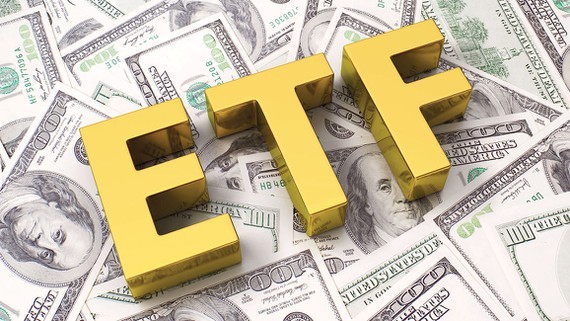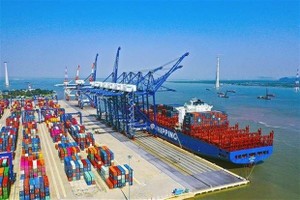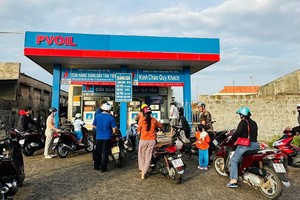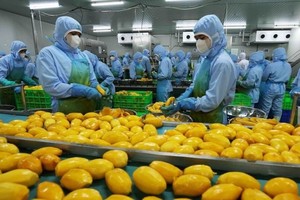 Illustrative photo
Illustrative photo
Rise in domestic ETF
An analysis report on domestic ETFs has just been published by the Ho Chi Minh City Securities Company (HSC), showing that the total value of assets under management of domestic ETFs has increased by 64%, to US$ 1 bn, while foreign ETFs only increased 12%, to $ 1.4 bn. Specifically, the first domestic fund, ETF E1VFVN30, has started to grow impressively after two years since its listing in 2014. At its peak, the fund size was $389 mn, equivalent to VND 9,053 bn, 42 times more than its initial size.
Currently, the fund assets are at $372 mn. Meanwhile, the VFMVN Diamond ETF and SSIAM VNFIN Lead ETF have been listed since 2020 and have attracted much attention. Total assets under management are currently $522 mn and $87.5 mn, up 99 times and 47 times, respectively. The performance results at the beginning of the year of these two domestic ETFs were higher than the general market, about 33.1% and 44.7%, respectively.
VinaCapital, one of the largest investment and asset management groups in Vietnam, with a scale of upto $3.3 bn, also just announced impressive performance numbers with foreign investment funds. Notably, VinaCapital VN100 ETF, established in 2020, achieved profit growth of upto 38.5%. This ETF certificate currently holds a portfolio simulated by the VN100 reference index, including 100 leading stocks listed on HoSE under the code FUEVN100. According to VinaCapital, more than 80% of the fund's total assets are invested in industries such as finance, real estate, consumer staples, and materials.
At the top of the portfolio are stocks such as Hoa Phat( HPG), Vingroup (VIC), Techcombank (TCB), VPBank (VPB), and Vinhomes (VHM). These are companies that benefit from the growth of the domestic economy and the increasing income level of a new generation of Vietnamese people.
Avoiding risks
Mr. Binh, an investor in Ho Chi Minh City, and a group of his friends, have just decided to sell all the shares purchased by the bank since middle of June, to invest in a series of ETF certificates listed on HoSE. According to Mr. Binh, the stock market is being negatively affected by the Covid-19 pandemic and it is not known when it will be controlled, especially when several businesses in Ho Chi Minh City have had to temporarily suspend all operations to avoid the spread of the pandemic. Under such stagnant conditions, the risk of bad debts will certainly arise and will definitely have a negative impact on the profit of all banks.
In addition to the above factors, the reason for Mr. Binh and many investors like him to switch to ETF certificates is because the level of risk is not too great compared to the stock market. In the current context, this is an investment channel to avoid sudden storms, such as in the stock market which is constantly facing too many erratic fluctuations. According to HSC, ETFs are often a cheaper and more efficient alternative to other mutual funds, especially during periods of high volatility. Therefore, it is not surprising that Vietnam has caught on with the global trend currently in high demand for ETF products.
According to Mr. Brook Taylor, the General Director of VinaCapital, Vietnam is among those rare countries in the world that showed a positive GDP growth in 2020, up by 2.9%, and continues to grow well in the first half of 2021 by 5.6%, which is helping in creating a growing confidence in both domestic and foreign investors. Vietnam's stock market has reached the top and now recognized as the best growth market in Asia with an increase of 15% in 2020 and 27.6% in the first six months of 2021.
However, despite a record outstanding growth, individual investors, especially F0 investors with less information and experience than professional investors, will face many risks when the market fluctuates as erratically as it did in recent trading sessions. Therefore, investors should diversify their portfolio into many different assets, and not put all its eggs in one basket.
Focus of attention
According to analysts, investing in open-ended funds and ETFs managed by professional and reputable fund management companies will help individual investors have a diversified portfolio with less risk. In fact, in the plunging sessions at the stock market, the ETF group only decreased slightly, even going against the general trend. However, according to investors, the number of listed fund certificates are still quite modest compared to the size of the market.
Specifically, as of 30 June, the entire HoSE had 488 securities traded, which included 385 stocks, 2 closed fund certificates, 7 ETF certificates, 65 covered warrants, and 29 bond codes. Out of the 7 ETFs currently listed on HoSE, 3 ETFs are using the VN30 index as a base, 2 ETFs are using the VN100 and VNX50 indices as a base, and 2 ETFs are using the VNDiamond and VNFIN indices as a base.
One factor that investors need to distinguish when investing in ETFs is that these funds do not evenly distribute shares in the index as investors often believe. Instead, they will rely on many different factors to be able to allocate their portfolio proportions.
In theory, ETFs should follow an index, but still try to outperform by increasing the weight of stocks that are being considered to be developed in the near future, minimizing the weight of stocks that are considered under-developed. Each fund must have its own list of priority criteria for selecting stocks. There are funds that will prioritize company specific micro-indexes such as growth rate, leadership, or funds that will prioritize macros such as industry cycles, or growth rates of industries in the near future.
























